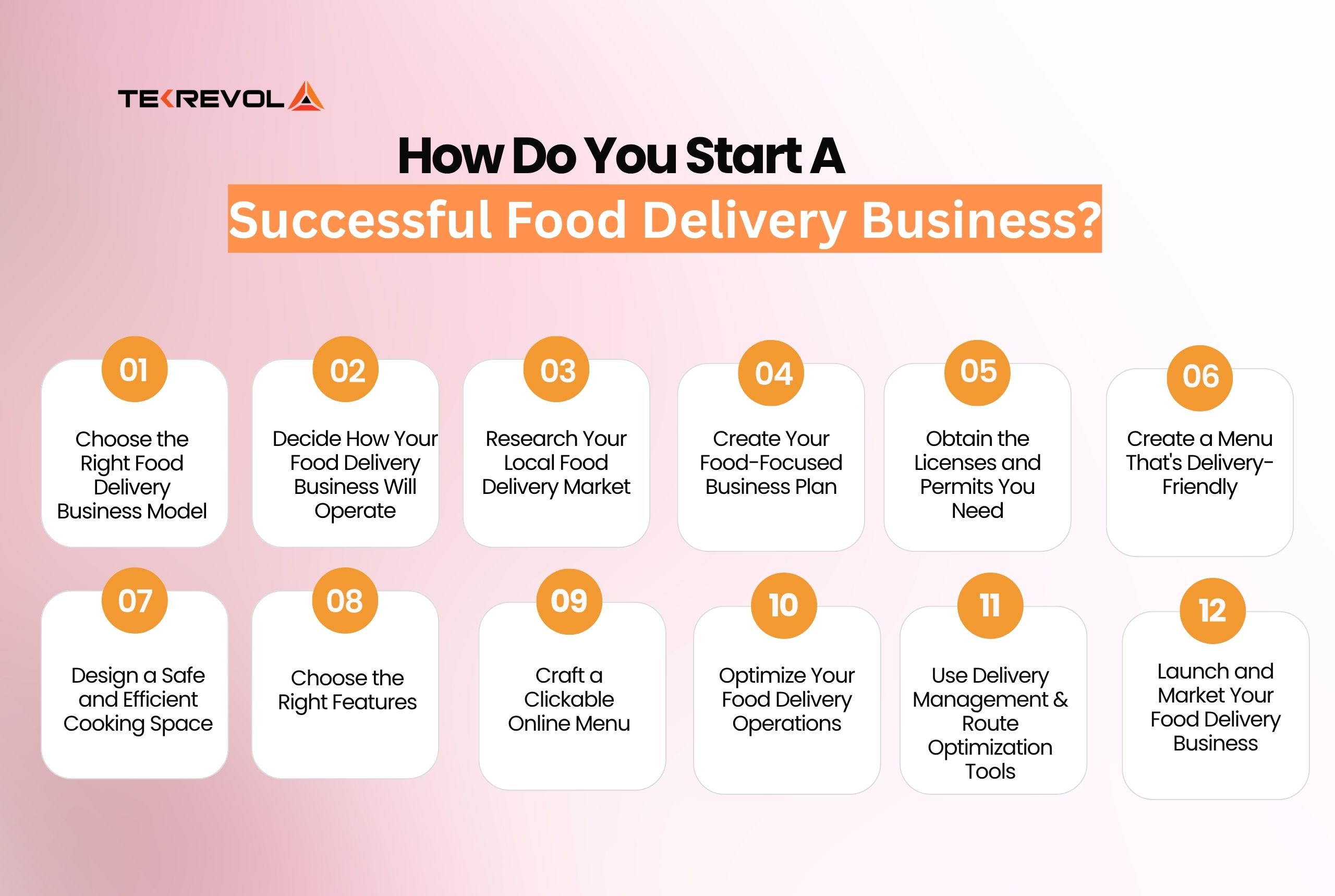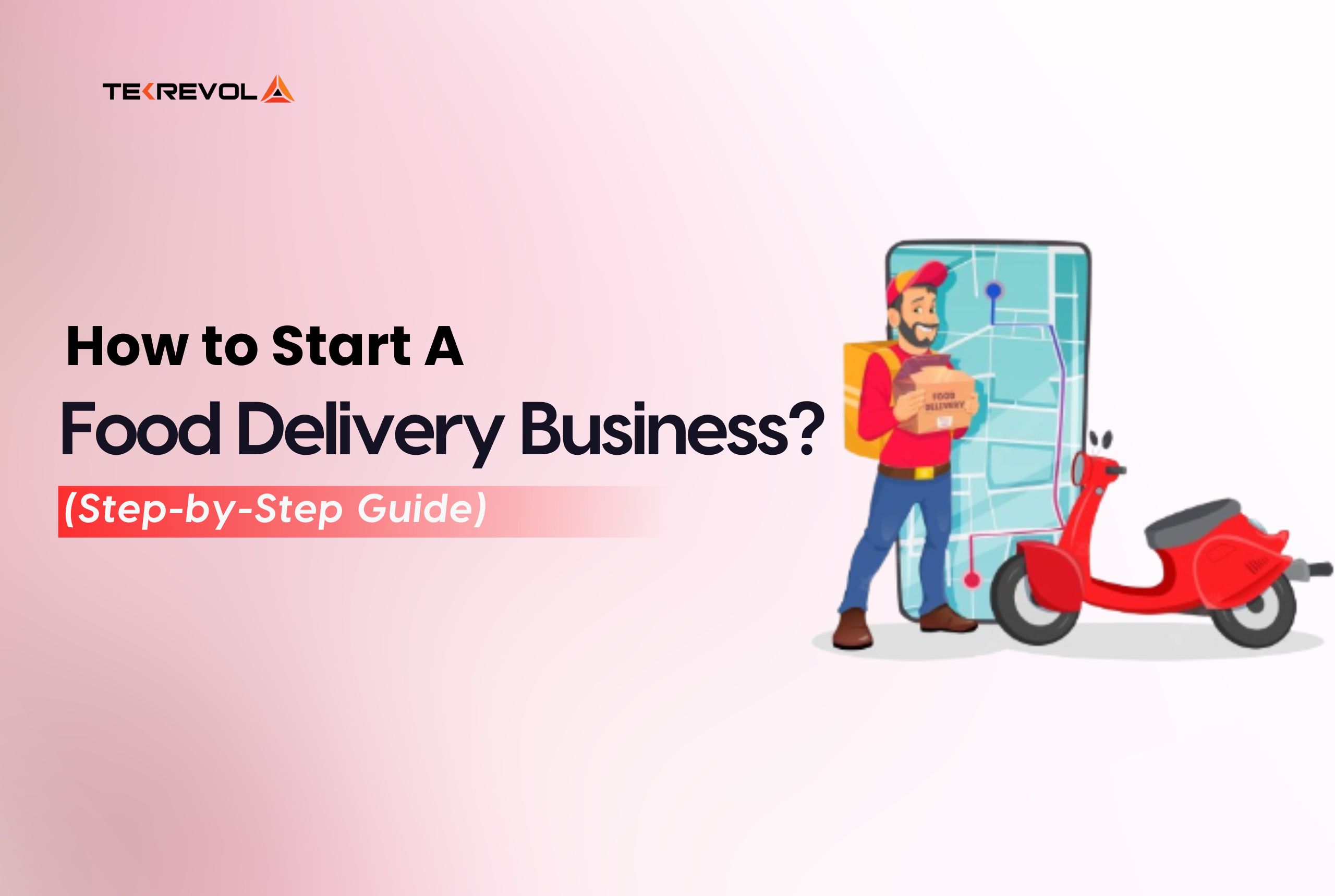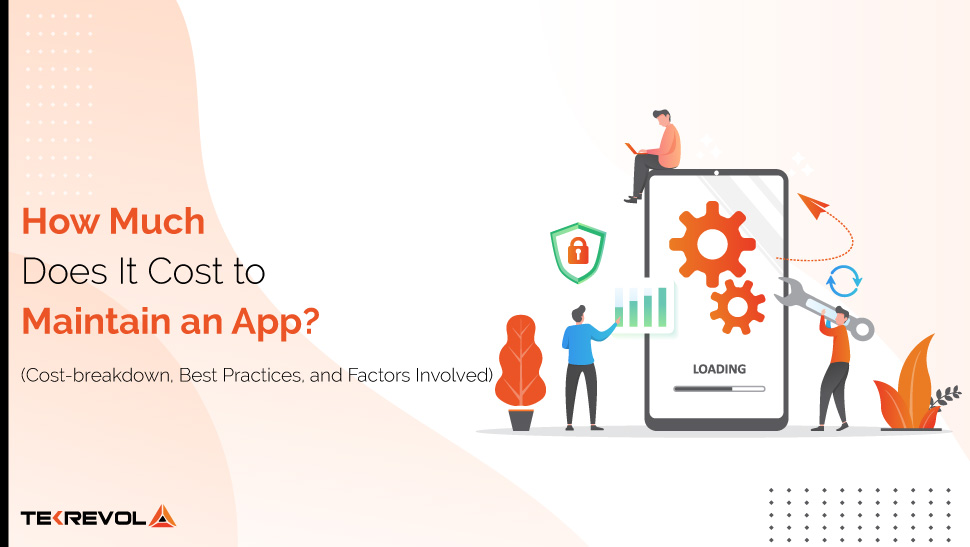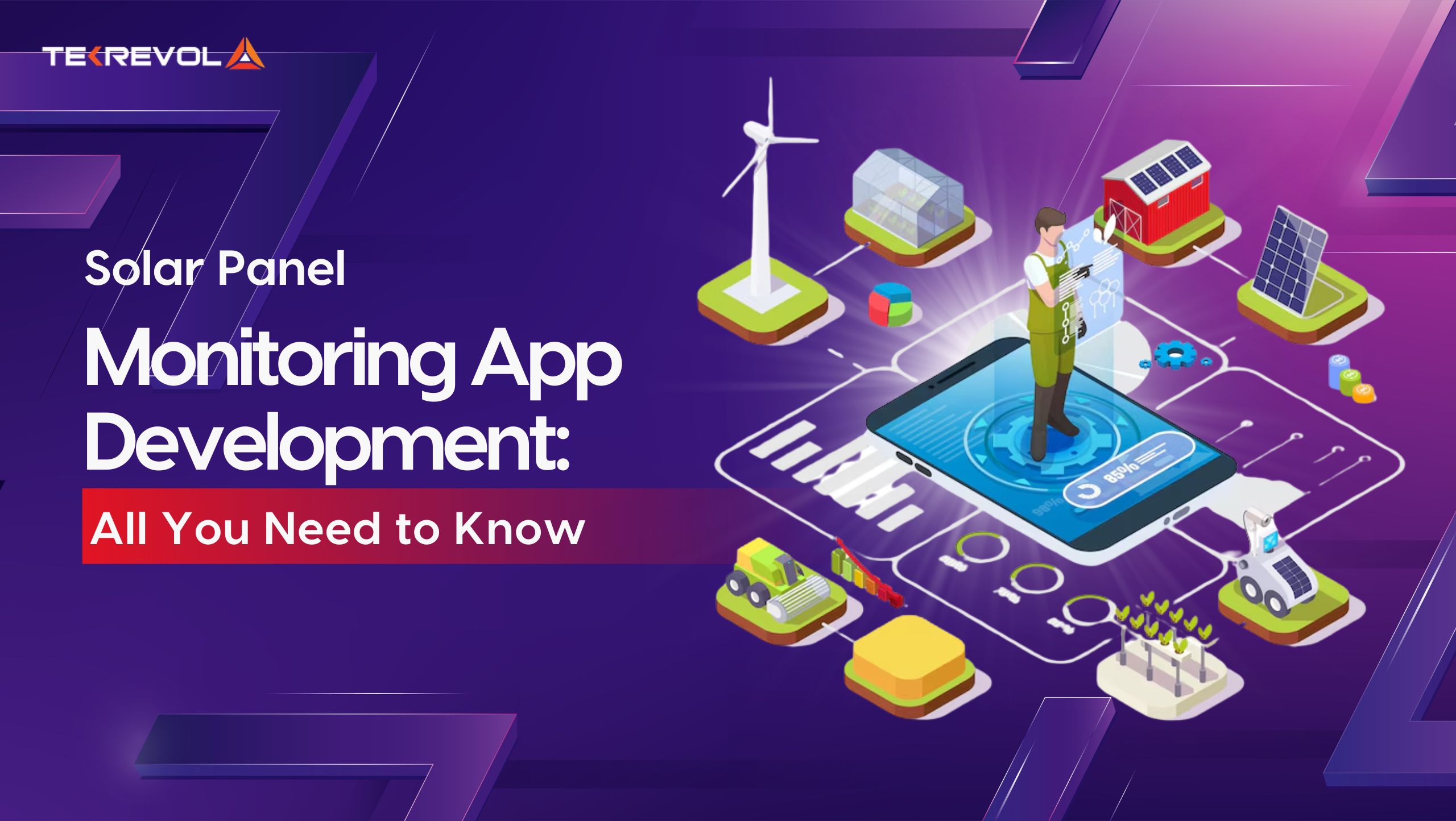Whenever you think about starting a food delivery business in the USA, you can’t help but notice the big names, DoorDash, Uber Eats, and Grubhub; they’re everywhere.
Busy schedules, back-to-back meetings, and no time to cook make food delivery apps a go-to solution. So it’s no surprise that food delivery is in high demand. Uber Eats is one of the fastest-growing food delivery platforms, serving users across 32 countries.
But with the availability of giant food delivery apps already out there, you might be wondering, “Is there room for one more?” Absolutely. You just need a smart plan, and that’s exactly what this guide delivers.
The global online food delivery market is expected to reach $317.7 billion by 2032, opening up major growth opportunities for businesses.
This guide walks you through how to start a food delivery business in USA. So let’s get started!

Why Invest in a Food Delivery Business in 2025? Statistical Reasons
The food delivery market is growing rapidly, and the numbers speak for themselves. If you’re thinking about starting a food delivery business in 2025, here’s why the timing couldn’t be better:
- The market for meal kit delivery is growing rapidly, and the market is expected to expand at a CAGR of 14.5%, from $22.8 billion in 2024 to $67.4 billion by 2034.
- In the U.S., DoorDash controls the food delivery market, with over 50 percent market share.
- The food delivery market is set to reach $213 billion by 2030 after it experienced a record growth boost in 2020, its largest in five years, fuelled primarily by the pandemic.

How Do You Start a Successful Food Delivery Business? Start with These 12 Steps
To begin a successful food delivery business, you should focus on good market research, proper business planning, sound technology and operations, solid marketing, and excellent customer service. Here are 12 simple steps to make your way to getting started.
Step 1: Choose the Right Food Delivery Business Model
To select an appropriate food delivery business model, one needs to understand their budget, customers, and capabilities as well as the competitive environment. In case you are uncertain about the food delivery app you want to build, it might be worth considering going over our list of the Top 20 Food Delivery App Ideas in 2025.
The following are the five most popular food delivery models in 2025:
| Model | Description | Best Suited For |
| Hot Meal Delivery | Made-to-order meals delivered hot within 30–60 mins. Ghost kitchen model. | Urban areas with high demand and fast turnaround |
| Meal Kit Delivery | Pre-measured ingredients + recipe cards for home cooking | Busy professionals who enjoy cooking |
| Prepared Meals | Fully prepared meals (chilled or frozen) ready to reheat or eat | Customers seeking healthy, convenient meals |
| Grocery Delivery | Fresh produce, pantry items, specialty goods (no prep) | Farms, local grocers, specialty food sellers |
| Catering Delivery | Large food orders for events, offices, or parties | Event planners, corporate clients, bulk food services |
Step 2: Decide How Your Food Delivery Business Will Operate
Before launching your food delivery business, you need to decide how it will function. Here’s a quick breakdown of the main operating models you can choose from
| Model | How it Works | Best Suited For |
| Aggregator Platform | Acts as a mediator between customers and multiple restaurants. Restaurants cook; you manage orders and possibly delivery. | Tech-driven startups, app-based services |
| Full-Stack Delivery | You handle everything—from cooking meals in your own kitchen to doorstep delivery. | Cloud kitchens, premium brands |
| Local Vendor Marketplace | A platform for independent food makers (home chefs, bakers, etc.) to sell under your umbrella. You manage tech and customer support. | Hyperlocal delivery, niche-focused businesses |
Step 3: Research Your Local Food Delivery Market
Before you jump into branding, menus, or creating your Food delivery app, step back and grasp the terrain you’re entering. Thorough market research does more than save you from big mistakes; it enables you to build a business that people want.
Here’s how to do it correctly:
- Find the gaps: Identify the holes: Browse cuisines or niche diets that you noticed are not well-represented in your geographical location, such as vegan comfort food, keto, or regional.
- Monitor your competition: Order from your local delivery services, and establish how their pricing, quality of food, delivery time, packaging, and customer feedback measure up against the competition. Then determine how you could do it better.
- Understand the diet of the locals: Regionality becomes an aspect of food trends. Scan local restaurant bestsellers, grocery store trends, and social media keywords.
- Establish the justifiable delivery zone: Transport distance is defined by food category.
- Set realistic delivery zone: Hot food = 3-5 miles; refrigerated or frozen = up to 20 miles. You need to weigh access against food quality and time taken during delivery.
- Factor in Local Weather and Traffic: Weather, rush, and geography affect delivery. Prepare for hot summers, rainy days, or snowy winters with appropriate packaging and logistics.
Step 4: Create Your Food-Focused Business Plan
A generic business plan is a good starting point, but food delivery requires more than just registering a company and setting up a website or an app.
Here’s how to create a practical, food-ready business plan that supports long-term growth:
Create a Financial Model Based on Actual Costs
Unlike many other startups, food delivery has variables like spoilage, packaging, and temperature control. Build a model that reflects real-world conditions.
Prime costs to incorporate:
- Ingredient and recipe costing
- Labor cost per order
- Packaging (insulated, eco-friendly, etc.)
- Delivery charges (fuel, per mile, or third-party logistics)
- 5–10% spoilage/waste buffer
- Ongoing marketing and menu engineering
Pro Tip: Monitor your cost-per-delivery as a key performance metric; it’s critical for pricing and profitability.
Estimate Startup Costs Based on Your Model
Food delivery app development cost varies depending on the business model you choose. Here’s a quick comparison.
| Business Model | Estimated Startup Cost |
| Hot Meal Delivery | $10,000 – $50,000 + |
| Meal Kit Delivery | $15,000 – $75,000 + |
| Prepared Meals | $20,000 – $60,000 + |
| Grocery/Ingredient Delivery | $5,000 – $25,000 + |
| Catering Delivery | $15,000 – $80,000 + |
Step 5: Obtain the Licenses and Permits You Need
It’s vital to have your business fully compliant with local regulations and health codes before you start your food delivery business.
- Do check with local rules: every city and state has its own different regulations, so check for yours.
- Start Early: Some permits take months to issue; apply long before your opening date.
- Engage Legal Counsel: Access to a lawyer can keep you from missing requirements and incurring unwanted delays.
- Acquire Specialty Licenses: It doesn’t matter if it’s for selling alcohol, you will require another permit; do that right away.
Step 6: Create a Menu That’s Delivery-Friendly
A winning delivery menu is one that balances taste, durability, and price.
- Travel-Resistant Foods: Going for such kinds of dishes that could remain unspoiled even while traveling include grain bowls, stews, curries, and denser salads. Stay away from things that become soggy.
- Use Smart Packaging: Choose containers that hold hot dishes in warm and cool meals in fresh. Leak-proof, insulated, and sustainable choices add to the quality and brand attractiveness.
- Portioning Right: Consumers at home want more value in their purchases. Thus, offer giant portions, meal deals, and family-style servings to fill, but do not eat into margins.
- Growth-pricing: Adding ingredients, labor, packing, and then delivering. Honest pricing builds trust, and subscriptions build customer loyalty.
- Stay Seasonal: The freshest ingredients available are in season. These seasonal ingredients will also keep the prices low, and your menu can change every few months so nothing gets too boring.
Step 7: Design a Safe and Efficient Cooking Space
A well-organized kitchen is the most important asset to a smooth food delivery operation. Make sure it meets health standards and supports your business model. You have to decide Between a Home Kitchen or a Commercial Setup:
| Kitchen Type | Pros | Cons |
| Home Kitchen | Lower startup costs, ideal for small batches, convenient | May not meet local health codes, limited scale, legal restrictions |
| Shared Commercial | Affordable access to pro-grade equipment, no long-term lease | Availability may vary, shared use requires scheduling |
| Full Commercial | Full control, scalable, meets regulatory standards | High initial cost, ongoing maintenance, permits, and inspections |
Tip: Before committing, speak to your local health department. Cottage food laws and commercial kitchen requirements vary widely by region.
Step 8: Choose the Right Features
The success of your food delivery application greatly relies on the features you provide. While choosing features, consider what your target market needs and the kind of food delivery platform you are creating.
To make the process smoother, work with a trusted on-demand app development company.
Here are some essential features to consider:
| User Features | Delivery Agent Features | Restaurant Panel Features | Admin Panel Features |
| User registration/login | Profile setup | Menu management | User & partner management |
| Browse restaurants & menus | Order notifications | Order notifications | Analytics & reporting |
| Search & filters | GPS navigation | Order status updates | Commission & payment handling |
| Place & track orders | Route optimization | Earnings & performance dashboard | Promotions & discounts management |
| Multiple payment options | Order history | Customer feedback access | App settings & customer support tools |
| Order history & reordering | Earnings Dashboard | — | —- |
Step 9: Craft a Clickable Online Menu
To craft a menu, you can take ideas from apps like DoorDash, Uber, and others. Make sure that your menu looks fantastic, is simple to use, and functions flawlessly on all devices. With only a few clicks, your customers should be able to discover exactly what they’re looking for and place their order.
Best Practices:
- Post high-quality, consistent food images
- Make clear item names and brief, descriptive descriptions
- Segment items into logical categories (e.g., “Lunch Specials,” “Family Combo”)
- Feature ingredient lists, nutrition, and allergen information
- Optimize layout for mobile users (70% plus of all orders are from phone users)
Tip: Hire a professional food photographer, and take some behind-the-scenes photos for your site and social media.
Turn on Smart Customization Options
Allow customers to customize their meals, but don’t let it get out of control and slow down or confuse the kitchen.
Customization Tips:
- Provide only simple modifications to accommodate (e.g., no cheese, sauce on the side)
- Design preset options instead of endless combinations
- Apply add-on pricing to high-end ingredients or add-ons
- Provide a “Special Instructions” box with a character limit
- Do not permit changes that interfere with portioning or prep workflow
Step 10: Optimize Your Food Delivery Operations
The way you deliver food plays a big role in customer experience. You can use your team or partner with a delivery service, but it must be fast and dependable, able to keep customers coming back. Here’s how to build a system that keeps your customers happy (and coming back):
| Model | Description | Best For |
| Third-Party Apps | Easy to start, no vehicles needed | Less control, higher per-order fees |
| In-House Drivers | Full control, better branding, long-term savings | High upfront cost, driver and vehicle management |
| Contract Drivers | Flexible scale, lower overhead | Less reliability, partial control over delivery quality |
Tip: you can choose a hybrid model too, own drivers for core routes, and contract or outsource during peak hours.
Step 11: Use Delivery Management & Route Optimization Tools
Utilizing delivery management and route optimization software like Routific, Onfleet, and Zero Route Planner to save time, reduce fuel expenses, and make your entire delivery operation smoother.
Search for the following features:
- Real-time driver tracking
- Customer delivery notifications with accurate ETAs
- Route optimization based on live traffic
- Mobile driver apps with drop-off directions
- Proof of delivery via photo or signature
Route optimization cuts logistics travel time and miles by 10%–30%, leading to major cost savings, which makes it a wise decision for any expanding food delivery company.
Step 12: Launch and Market Your Food Delivery Business
Once your app is created and tested, it is time to launch and market your food delivery app. The perfect execution will allow you to attract users, accept orders, and develop your brand as early as possible.
Define Your Brand Clearly:
- Find out the unique attributes you offer before marketing your company. Highlight your menu, your delivery, or your sourcing policy.
- Choose an easy and practical name and logo.
- Stick to a coherent messaging strategy.
- Highlight the specialties of your service (e.g, in nutrition options, fast delivery)
- Show pictures of high-quality food to show your product as it is.
Plan a Focused Launch Strategy
- Launch small to begin testing your systems and gaining feedback.
- Start with a soft launch for friends or local testers.
- Give a straightforward promotion (10% off or free delivery)
- Issue a press release to food sections or local blogs.
- Keep your initial delivery area restricted to control quality.
Utilize Local Marketing Channels
- Marketing to your delivery area works better than a mass campaign.
- Place geo-targeted ads on sites such as Instagram or Google.
- Do cross-promotions with local businesses
- Show up or host small food events or markets.
- Use flyers or door drops in local residential neighborhoods.
Tap Social Media Wisely
- Social media is suitable for food operations but remains consistent and pertinent.
- Post food pictures, menu changes, and ratings.
- Post background information or a kitchen prep video.s
- Use Instagram, Facebook, or TikTok based on your market.
- Reply to messages and comments periodically.
Provide Simple, Pertinent Promotions
- Begin with several practical promotions to spur initial interest.
- Initial-order discounts
- Family dinner bundles or a weekly meal plan
- Free delivery on a minimum spend.
- Specialty menu items during holidays or events
Create a Basic Loyalty Program
- Reward repeat orders with a basic reward program.
- Award points per purchase or a free item after so many buys
- Send offers to repeat customers via email or SMS.
- Give referral discounts to current users.

How Much Does It Cost to Start a Food Delivery Business in 2025?
The overall food delivery app development cost ranges from $30,000 to $150,000 +, depending on both the app type and the business model, such as a single-restaurant, cloud kitchen, or multi-vendor platform.
| Type of Food Delivery App | Type of Business Model | Estimated Cost Range (USD) | Details |
| Single Restaurant App | Independent Restaurant | $30,000 – $50,000 | Basic app for one restaurant with menu, orders, and delivery tracking. |
| Multi Restaurant
Aggregator |
Platform like
DoorDash/Grubhub |
$80,000 – $150,000 | Complex app with listings, filters, commission logic, and multi-vendor support. |
| Cloud Kitchen / Ghost Kitchen App | Delivery-Only Kitchen | $50,000 – $100,000 | App for brands operating without dine-in, optimized for delivery logistics. |
| Subscription-Based App | Meal Plans / Diet Services | $40,000 – $90,000 | Includes recurring payment systems and menu customization options. |
| Marketplace + Logistics App | End-to-End Food Delivery Platform | $100,000 – $150,000+ | Full-stack solution with restaurant panel, delivery agent app, and admin dashboard. |
If you’re trying hard to find the most profitable option to start working with. We highly recommend our blog on top-paying delivery apps in 2025. It will give you clear insights into which platforms offer the best earning potential.
Note: The above prices are estimates. For an accurate quote tailored to your specific features, objectives, and business model, please contact our consultants or use our cost calculator.
Build Your Food Delivery App With TekRevol
You might already be aware that the worldwide online food ordering market is expected to expand tremendously, from $325 billion in 2020 to $470 billion by the year 2025. If you’re considering starting a food delivery business, it would be helpful to examine leading companies like Uber, DoorDash, and others in the industry to discover the different business models that would work best for you.
TekRevol, as a leading mobile app development company, has extensive experience in this niche. We work with you from start to launch, helping you create a food delivery app that performs well and grows with your business.











